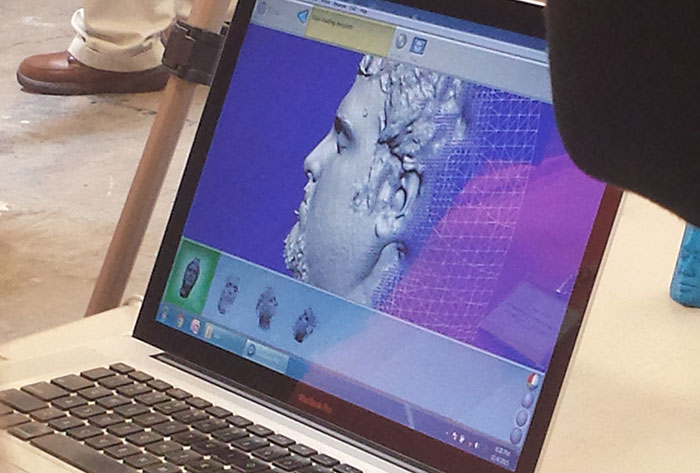When I heard that the International Sculpture Conference was coming to Phoenix, I knew I wanted to be involved. I joined the International Sculpture Center, the organization that sponsors it, and began deciding what I wanted to attend.
One of the sessions I signed up for right away was “3D Body Scanning and Prototyping Workshop.” It was to be held at Arizona State University, one of the largest universities in the United States, which is in Tempe, part of the metro Phoenix area. The workshop was organized by Dan Collins, a professor and longtime 3D printing enthusiast whom I first met last year through the Shemer Art Center 3D printed art show “Materialize.”
I didn’t know much about body scanning, but I thought it would be an interesting adjunct to my work with 3D printing. Little did I know that Dan would ask me to be part of the session ….
So on an unusually drizzly November 4 in Phoenix, 30 of us gathered in ASU’s Art Warehouse to learn and share about body scanning.

It helped that I brought a lot of show and tell. I had a couple of my large format 3D printed sculptures, some smaller sculptures including Oculum, a sculpture I had printed in ABS and then patinated – sculptors get patination – as well as a version of that same form I had printed in PLA and just pried off the printer that morning to show them how it looked right after printing.
I also had a 3D printed version of my sculpture She I had created five feet tall in steel – I had a photo of the sculpture in steel so they could compare them.
I brought my Cerberus 250 3D printer, too, which I ran during the event.
There were several other companies there with 3D printers, including Stax, which had a 3D printed prosthetic hand.
They also had a Form 1+ 3D printer that uses a totally different technology, SLA (Stereolithography Apparatus) printing, to print a working magnifying glass with this amazing printer!
There were also three homemade body scanners that anyone can build for under $500 – how cool is that! They scanned people as they stood on a rotating gear and the scanner moved up and down on a simple tower.
There were lectures, of course, too, and lots of discussion – many of the attendees were professors as well as artists.
I came away still unsure how scanning would fit into my artistic practice, but with a whole new way of looking at how these technologies complement each other ….
